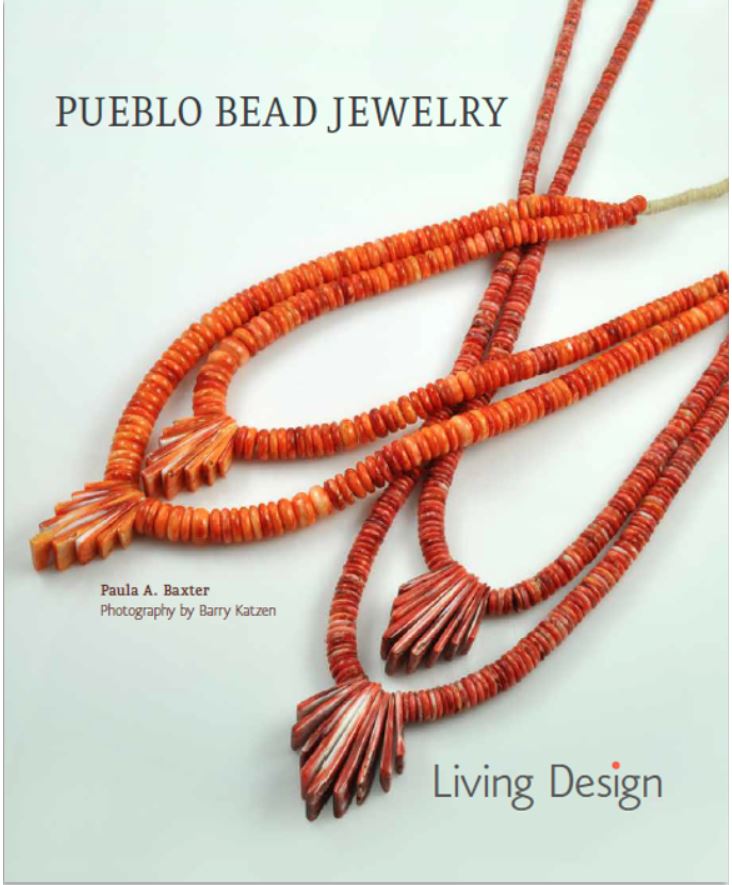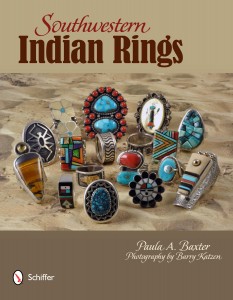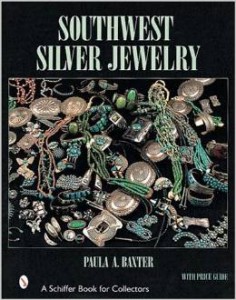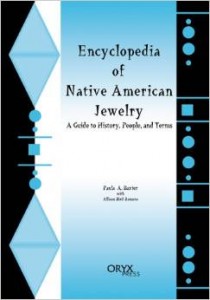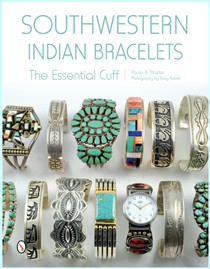I can’t resist dwelling on the Bracelet these days. Not only did the first one hundred years of creation confirm the cuff form, but design from this period became the foundation for all that would develop after 1970. Natives adapted the shape to suit male, female and even children’s tastes. Scale played an important role in this attention to gender preference. Yet both sexes came to appreciate some commonalities. The spread of stone settings on a cuff proliferated in the early 1900s.The contrasts created on a band from stamps and dies and repoussé work made the cuff more sculptural. Stone setting added to texture.
Fact: The early solid silver cuffs of the first two decades of bracelet-making have never lost their popularity and are frequently revived designs.
Basically, the first one hundred years of Bracelet creation by Southwestern Natives established a high standard for this work, one that was improved in technique by new and better tools. Roughly, the period from 1870 to 1970 solidified and confirmed the cuff form as classic in nature. While clever variations would occur from time to time, in circular bangles and hinged cuffs, most Indian makers found the band shape wrapped around the wrist to be the form of choice.
Fact: Not just the center part of the band across the top of the wrist came in for decoration, but the terminal ends — and even inside — could be embellished as well.
I wrote Southwestern Indian Bracelets: The Essential Cuff to explain, in part, why this jewelry form is the most popular item in the marketplace. Bracelets please their owners because they serve not just as attractive adornment, but as personal expression of an individual’s aesthetics. Natives loved wearing them and many photographs of the 19th and early 20th centuries show their pleasure; even an otherwise somber portrait of a man or woman is illuminated by pride in the jewelry they wear. Edward Curtis enjoyed posing his subjects in their adornment.
Fact: The early metal bracelets of the Navajo and Pueblo soon came to symbolize a rich joining of European metalwork craft and Native ingenuity in design.
Which brings us to the Bracelet. This cuff or band worn around the wrist dates back to antiquity in the Southwest; it was originally made from natural materials like bone or hide. The Ancestral Puebloans fashioned fine bracelets from shell, leaving it blanched or decorated with small pieces of turquoise. When metalworking was introduced to the area by European traders and immigrants, the earliest examples were made from brass and copper.
Fact: These first bracelets were usually hammered or twisted into simple wire cuff shapes.
One can find Bowguards in many museums where they were collected as evidence of material culture related to hunting practices. They tend to date from the late 19th to early 20th centuries. The designs are largely abstract and geometrical. Bowguards can be seen mostly in the Southwest, and occasionally a Native artist will reproduce a piece in the old-style as a tribute to his/her heritage.
Fact: They may still be worn by Native men for ceremonial and social dancing purposes.
The Bowguard was a device worn by Native men on their wrists to protect against the recoil snap of a bowstring. Nowadays, a bowguard is a form of adornment, and a highly collectible piece of antique Indian jewelry. Smiths fashioned bowguards from a rectangular pice of metal tied to a thick leather strap. Designs often favored an X-shape, could be stamped and/or set with stones.
Fact: This is one of the few items used for a combined utilitarian and ornamental purpose that has escaped commercialism.
Bone is the material derived from the skeletons of animals. This organic material has been widely utilized across Native North America. Meticulous cutting, hand sanding, and polishing bone from deer, cows, and other animals produced useful beads and carvings.
Fact: Decorative enhancements could be added by bleaching, painting, incising, and carving.
The bolo is a fertile form for experimentation in design. Its central setting lends itself to either abstract or representational imagery; the rich variety of lapidary styles also serve the bolo well, from channel inlay to cluster stones.
Fact: Since the 1970s, the bolo tie created by Native artists has assumed more elevated artistic flair as a palette for intricate designs in stone and metal.
The bolo tie may not be Native in origin, but this neckwear (chest wear?) is a popular form in Western male personal adornment, now worn by both sexes. Southwestern jewelers, Native and non-Native, have made many variations in design for the central ornament.
Fact: Victor Cedarstaff, a non-Native silversmith and leatherworker from Wickenburg, Arizona, is usually credited with the invention of the modern bolo tie around 1948.
In the Southwest, Native artists derive popular bird motifs from ancient designs (often adapting art work found on pottery). Favorites include using the quail, parrot, turkey, Hohokam water bird and Zia Pueblo bird. During the mid-twentieth century tourist era, the roadrunner, New Mexico’s state bird, entered the jewelry repertoire.
Fact: The Native American Church brought the peyote bird into design motifs.
